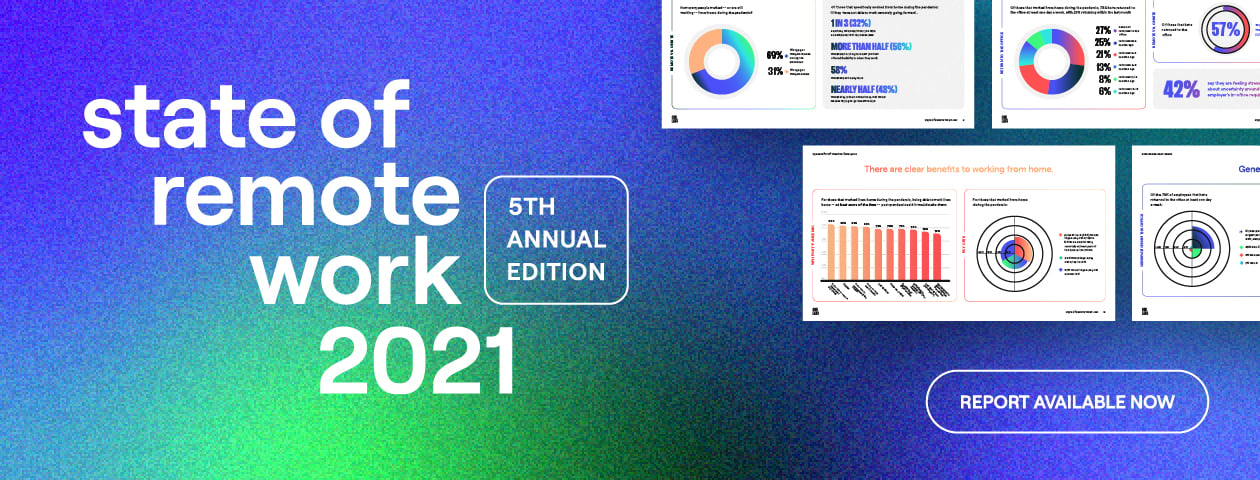Now that we’ve settled into hybrid working, set up our ergonomic workstations, and decorated the home office (or kitchen corner)… what does working from home really look like?
Our 2021 State of Remote Work showed us new ways people are adapting to the future of work. From parents to pet owners to fresh-faced grads, everyone has a different working from home experience.
Here’s what we learned about working from home:
Location, location, location
Where do people work from home?
It’s all about the desk vibes.
Of those that worked from home during the pandemic, the most popular place to work from home is the home office. Those who make do with their space use the dining room and bedroom at a shared 39%. Others use their couch (38%), kitchen (31%), or closet (21%). Folks who venture outside the home tend to work in coffee shops, coworking spaces, or even outdoors.
Don’t let that couch-working convince you to ditch the desk chair for a cozy cushion. Research has already shown that people who work from their couch struggle more than other remote workers. Where your workspace is set up has a massive impact on your physical and mental well-being. Everyone needs a separate, comfortable workspace that allows for the occasional good stretch and a break.
On the move
During the pandemic, we saw a great migration of workers to new towns, states, and even countries. We identified some trends from those who worked from home during the pandemic:
- More than a quarter (27%) relocated during that time
- Younger employees (ages 21-40) temporarily relocated 14X more than older ones (ages 40+)
- 78% moved from an urban location, while 47% moved from a suburban location
- 41% moved to a new state
- 13% moved to another country
Of those who moved permanently, older generations were drawn to urban areas while younger people moved away from cities. Employees aged 26-40 made up the majority of moves from urban to suburban or rural areas, and more than half of the moves from the suburbs to rural areas. Unlike their younger counterparts, boomers made up the largest group of those who moved from rural areas to cities. And while boomers moved the most to another state, millennials took that one step further and made over half of the moves to another country.
Talk about a generational shift.
The work from home experience
The thing about working from home is that there’s no clear boundary between work and… well, home. 63% of people who worked from home during the pandemic were caretakers. That’s 63% of people juggling full-time work and full-time care for children or dependents.
Of those children in their care:
- 21% were under 5
- 38% were 5-11
- 35% were 11-18
And many heard the call to be caretakers in different ways. 1 in 2 people who worked from home during the pandemic adopted a pet. Even houseplant sales surged during the pandemic.
Are employees matching that level of care? From our research, only 40% of employers provided a one-time payment to employees for WFH expenses. And 35% of employers provided or still provide a monthly stipend to cover those expenses.
What’s next for working from home?
Things look different from the 2020 “work from home experiment.” We’re now beginning the “return to work experiment.” At this point, 73% of those who worked from home during the pandemic have returned to the office at least one day a week. While companies explore a hybrid environment for the first time, working from home will continue to change. One thing’s for sure, though: WFH isn’t going anywhere.
%20(1).png)
Better meetings start here
From huddle rooms to boardrooms and everything in between, we’ve got you covered with solutions that take teamwork to the next level.
Shop Solutions